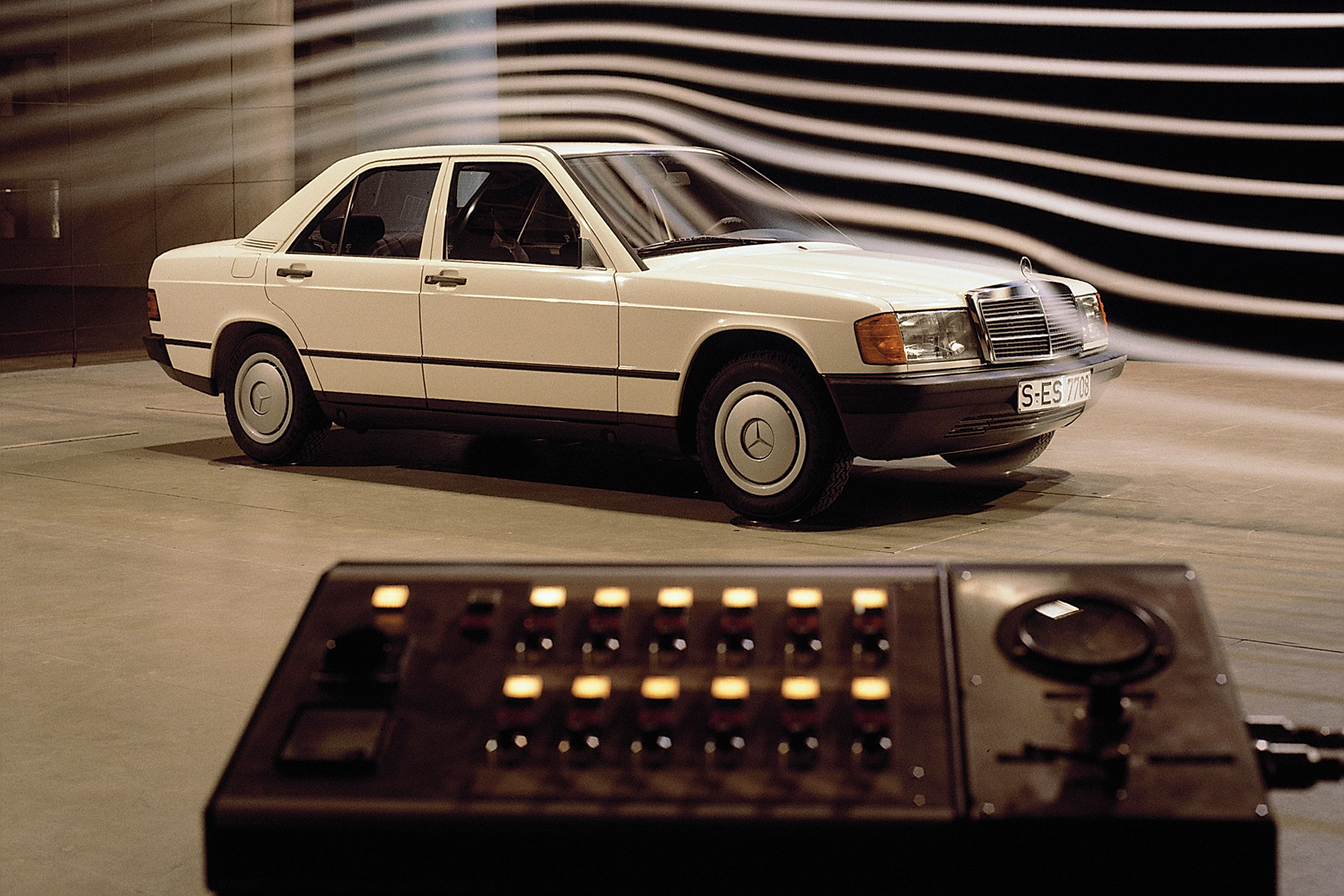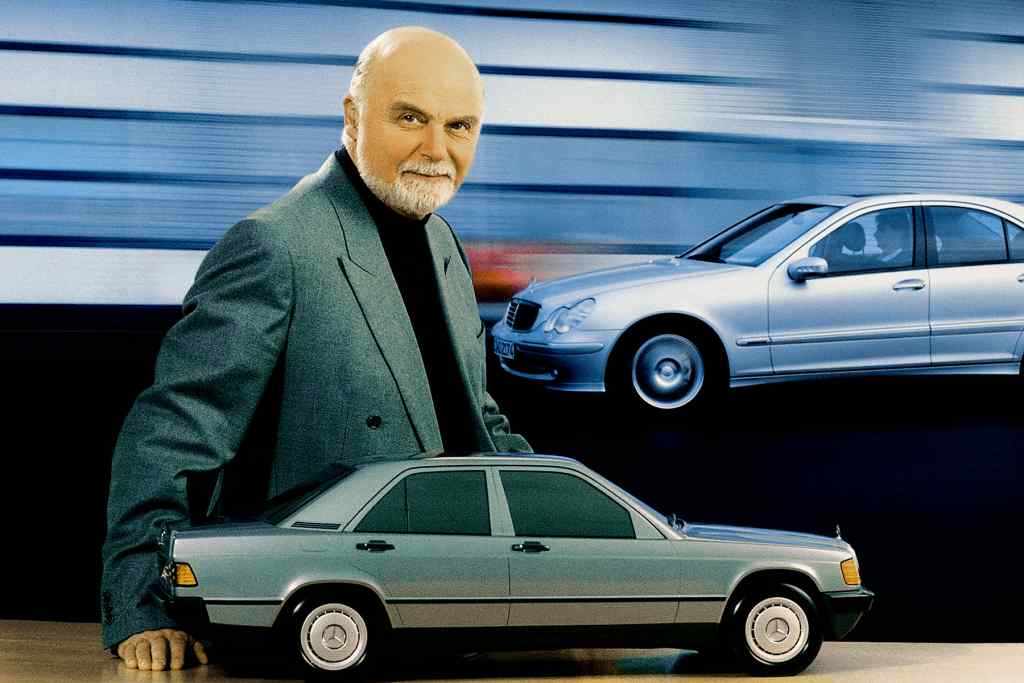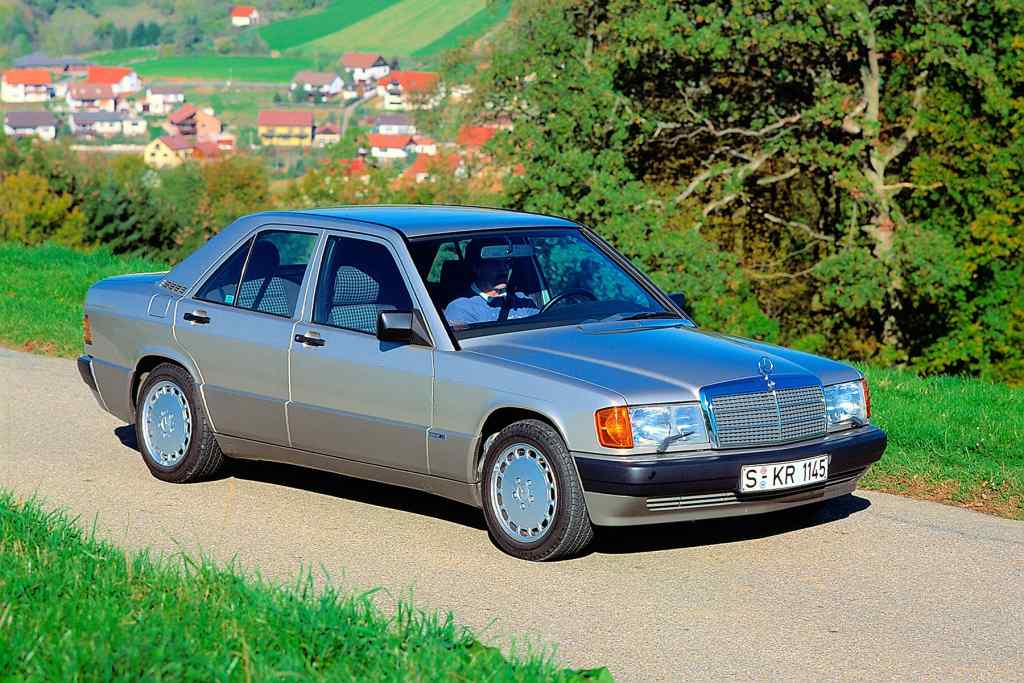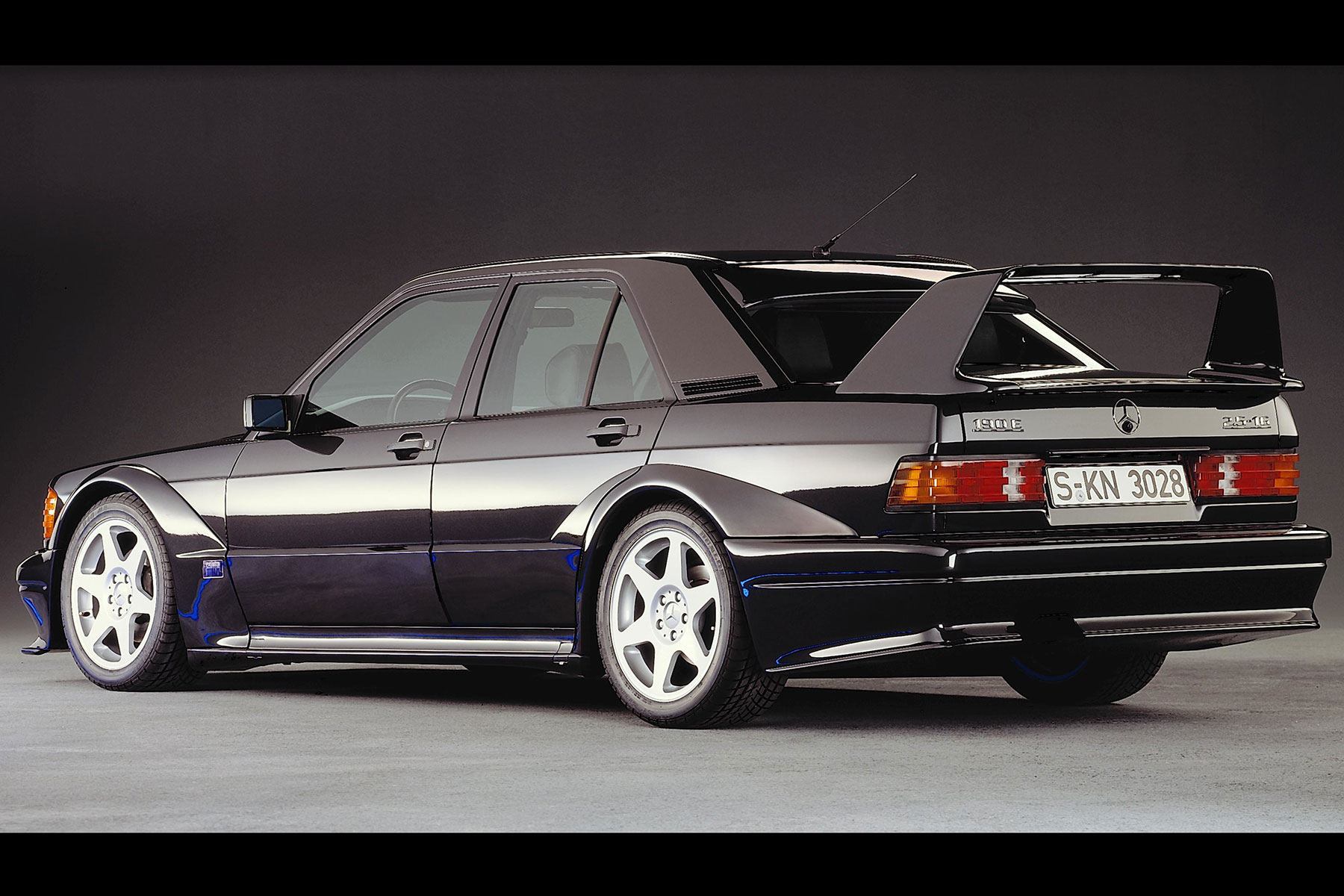
By the 1970s, Mercedes-Benz had decided it needed a new entry-level model to take on the BMW 3 Series and Audi 80. However, rather than rush its launch and produce a cut-price car, Mercedes reportedly spent more than £600 million developing the W201 – better known as the 190.
“It is clear… that it has to be a typical Mercedes-Benz,” said chief engineer Dr Hans Scherenberg in January 1974. Mercedes later said the W201 was to “consciously break away from the other vehicles of the medium-size category with regard to quality, safety and refinement.”
The 190 eventually went on sale eight years later, in December 1982, with early models built in the Sindelfingen plant before production moved to Bremen, where the car’s C-Class successors are still made today.
German engineering

That huge development budget, along with the lofty standards set for the 190, led to Mercedes describing its baby Benz as ‘over-engineered’. For a change, the advertising slogan was absolutely right.
The only engine choice at first was a 2.0-litre four-cylinder petrol unit. This produced a modest 90hp in standard carburettor-fed guise (badged the 190) or 122hp with mechanical fuel injection (the 190E – Einspritzung being the German word for injection). We drove a 1991 190E for our Retro Road Test.
Highlights from the car’s 11-year lifespan include the so-called ‘whisper diesel’ 190D (the first passenger car with engine soundproofing) and, of course, the desirable six-cylinder 2.6-litre 190E.
Tuned by Cosworth

The hot 190E 2.3-16 featured a Cosworth-tuned engine and was grabbing headlines even before it was launched. In the autumn of 1983, three prototypes set long-distance world records by clocking up 25,000 kilometres, 25,000 miles and 50,000 kilometres at average speeds of nearly 155mph on the Nardo circuit in southern Italy.
The 190 super saloon also featured at the opening of the new Nurburgring in May 1984. Some 20 racing drivers inaugurated the circuit by doing battle in Mercedes-Benz race cars. The winning 2.3-16 was driven by a relatively unknown Brazilian called Ayrton Senna.
The 190E 2.3-16 became the bodykitted 2.5-16 Evo II (pictured below). This homologation special formed the basis for a highly successful racer that competed in the German Touring Car Championship (DTM) from 1990.
Modern classic Mercedes

The 190 was a huge success for Mercedes-Benz, with a total of 1,879,630 made before production ceased in August 1993.
More than three decades later, the W201 is one of the best modern classics you can buy. You’re bound to find a few ropey examples at the bottom end of the market, but spend upwards of £5,000 and you can discover some cared-for models that have stood the test of time very well.
Drive a 190 today and you’ll be amazed that it was launched in the early 1980s. It feels relatively modern, albeit smoother-riding and arguably more refined than of 2024’s junior-exec saloons.
In true Mercedes-Benz fashion, the manual gearbox isn’t great, but this isn’t a car that likes to be rushed, so you’re better off with an automatic transmission anyway. Just take your time and enjoy the experience.
ALSO READ:
1991 Mercedes-Benz 190E review: Retro Road Test



[…] who prefer Mercedes-Benz cliches such as “vault-like construction” and “over-engineered design” can always turn to […]
[…] vehicles, rolled out of the factory. Since then, it has become a British institution, both as a starter classic and a car for every occasion. Weddings, proms and even funerals – the Morris Minor has been […]
[…] first example of the HWA Evo restomod heads to auction next month. A modern reinterpretation of the Mercedes-Benz 190E 2.5-16 Evo II – a wild homologation special from the 1990s – only 100 examples of the HWA Evo will be […]
[…] across to the design studio, we see classic Mercedes-Benz paint colours such as Silver Thistle and Sunset Orange being remixed and enhanced for the Evo. Then […]
I recently restored a 1969 Ford Mustang with my father, and it was an incredible experience that brought us closer together. We spent countless hours researching, sanding, and painting to bring the car back to its former glory. The sense of pride and accomplishment we felt when it was finished was overwhelming. I’d love to share more about our journey and the lessons we learned along the way.
We’d love to hear more, John!